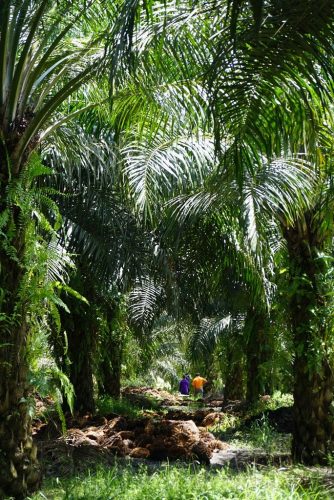The question we are most often asked when we talk about sustainable palm oil is: what does a sustainable oil palm plantation look like? There is no single definition of sustainable palm oil. 85% of palm oil is grown in Indonesia and Malaysia, and both countries have mandatory national standards for growing oil palm. Voluntary standards are also in place to improve standards of sustainable palm oil; these schemes vary in their aims and criteria which makes understanding sustainable palm oil a bit of a headache!
Sustainable or not?
The Roundtable on Sustainable Palm Oil (RSPO) is the dominant certification scheme and has set the global standards for sustainable palm oil; these give growers common commitments to benchmark against and provide a recognised scheme for buyers and consumers like us.
At the moment, a sustainable plantation can be defined as one that has been managed and certified according to the principles of the RSPO. But what does this look like on the ground and does a sustainable plantation look different to a non-sustainable one?

Looking as a bystander, it would be hard to tell the difference, but there are some keys things that will have taken place to ensure the plantation you’re looking at can be classed as sustainable.
A certified sustainable plantation must have met certain environmental, social and economic standards; some of these you may encounter include:
- Original land did not contain significant biodiversity or wildlife
- Plantation owners communicated with local people and gained free, prior and informed consent to new planting
- Habitat for wildlife is maintained or replanted to create habitat corridors
- Fair pay for workers
- Human rights are respected
- Childcare facilities provided for workers’ families
- Environmental footprint reduced
These are just a few!

The good news is that the number of certified plantations, and therefore the amount of sustainable palm oil available to buyers is increasing. Many companies find that incentives to being certified include costs savings for the business and improved efficiency, therefore creating a good business model for sustainable palm oil!
But we still need to increase demand, which is where we need your help.
Most importantly, it’s key to understand that certification by the RSPO is not the end point of sustainable palm oil. RSPO itself has already moved on to developing and releasing the RSPO NEXT voluntary standard, which includes increased protection for biodiversity and stronger standards – including no deforestation. In addition, initiatives such as the Palm Oil Innovation Group (POIG) are in place to strengthen the RSPO criteria and to build on current manufacturer commitments to adopt a stronger set of requirements from its growers. In response to campaigns and schemes such as these, many companies are now promoting deforestation free or conflict free palm oil policies.
Although there are still concerns from many about sustainable palm oil, plantations which are grown adhering to the above guidelines are so much better than the alternative. We’ll continue to work with partners to ensure that the demand for sustainable palm oil increases and better protects biodiversity.

TAKE ACTION NOW
Be a part of our Sustainable Palm Oil Challenge, and Act for Wildlife today to protect precious species.
NOW is the time to ACT FOR WILDLIFE. Conservation is CRITICAL; species are under threat. TOGETHER we can make a BIG difference. Take action TODAY and join us in PREVENTING EXTINCTION.